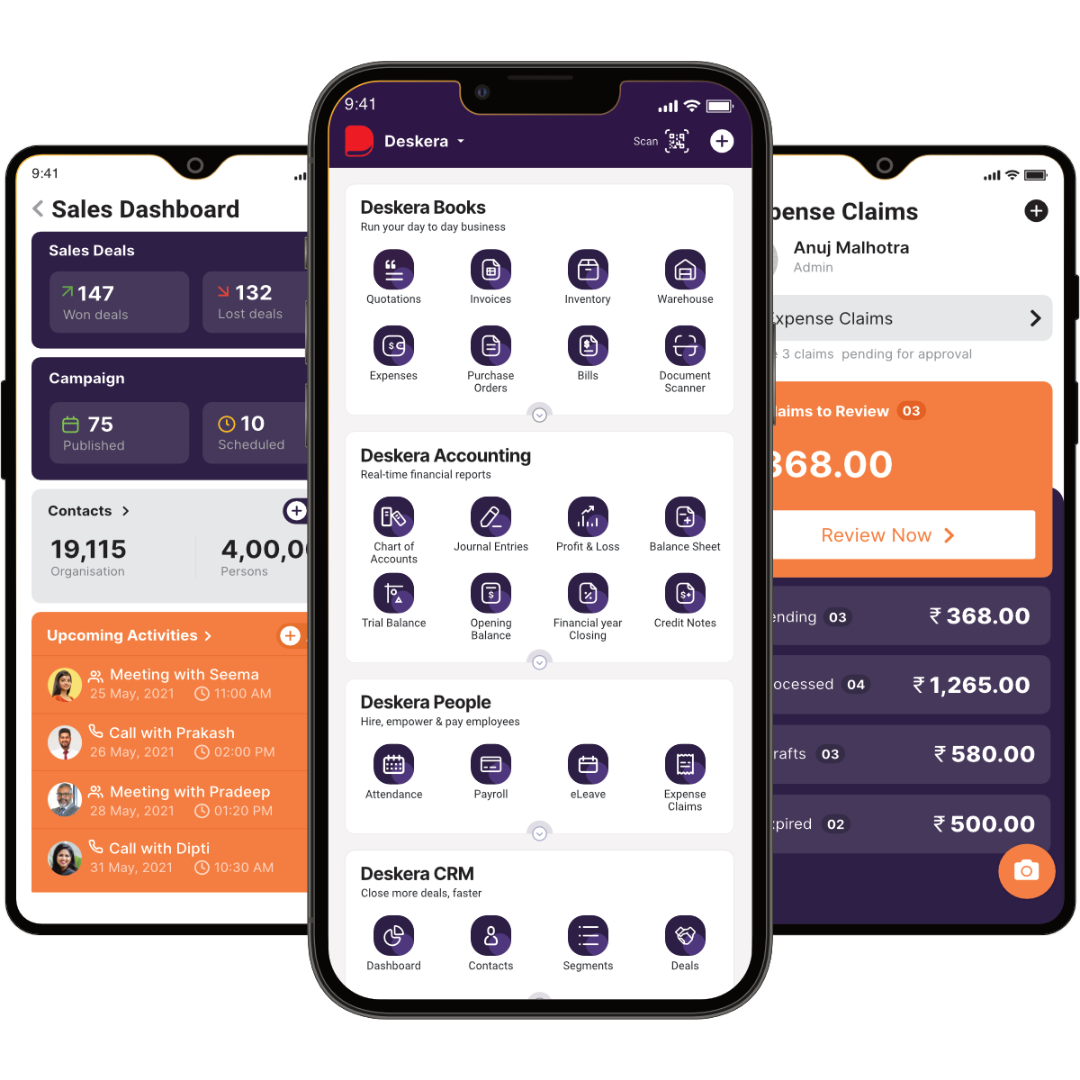It is a new world of business, but the basics are still the same – managing your inventory and supply chain are critical to success.
Negative Inventory is an essential concept for retailers and distributors to understand. Managing a company's inventory to optimize use is known as inventory control. It hugely impacts an organization's profits and customer satisfaction.
Real-time inventory updates ensure that your inventory levels are sound. This data can also help you to have smooth and flawless production. Aside from this, timely deliveries can boost customer retention.

Without a proper inventory management system, you may face problems like stock-out. Hampered production and deliveries are other disadvantages of a malfunctioning inventory system. Negative inventory can be a result of inadequate inventory management.
Thus, inventory management aims to maximize profits with the least amount of inventory investment. Also, it must oversee maintaining high levels of customer satisfaction. Inventory control is one of the main concerns of firms with significant investments in inventory. This is especially true for retailers and distributors.
You must find ways to combat this issue. This post highlights the concept of negative inventory. Let’s see what more we have here:
- What is a Negative Inventory?
- What causes Negative Inventory?
- How Does Negative Inventory Impact Businesses?
- How to Prevent Negative Inventory?
- Consequences of not Correcting Negative Inventory
- How does ERP reduce Negative Inventory?
- Conclusion
- How can Deskera Help You?
- Key Takeaways
- Related Articles
What is a Negative Inventory?
Negative inventory refers to having less than zero of a specific item in stock. You certainly cannot physically have less than zero of a thing. Yet, your system must denote it in some way. Thus, the item is represented negatively on your system. Thereby giving you a negative inventory report.
There are many problems in inventory management. These could be a lack of accurate documentation or difficulties in determining what resources should be added and taken out. Also, there could be a time-consuming burden on the supply chain.
Summing up, negative inventory is an accounting term for a situation where the quantity of an item in inventory is a negative number. This can happen when goods are returned and the number of goods sold is greater than the number of goods purchased.

Negative inventory can lead to customer dissatisfaction and lost profits. This is because the company is unable to fulfill orders. It can also lead to cash flow problems. Thus, the company is forced to purchase more of the item in order to keep up with demand.
It is unfortunate that some companies have fallen into the trap of being caught with a negative inventory. Negative inventory is an integral part of a business. If managed properly, it can help to keep you running your business effectively. However, we all know that it is not possible to control everything. So what do you do when this situation arises?
What causes Negative Inventory?
There are numerous potential causes of negative inventory. Timing issues could be one of the issues. This can happen when an inventory shipment is marked as complete, even though production may still be ongoing.
The delay in getting the goods processed and placed on the warehouse shelves may be the root of the negative balance. Production problems could result in a product being produced in quantity less than required. This may occur, for instance, if the bills are unclear.
A negative balance could result if you have the same kind of goods in multiple warehouses. Inventory data may be incorrect if a product order is shipped from the wrong location.
Let’s discover these reasons in detail.
Timing
The most typical justification for a negative inventory balance is timing. For instance, the furniture store receives a request for ten chairs. It is a possibility that the process has not begun or there are not enough desks in the warehouse. Yet, the inventory system will record the inventory as already delivered at the time an order is placed.
When the warehouse has enough goods and can begin shipping to consumers, this issue will be resolved quickly. The inventory balance then drops to zero.
Production
Negative inventory can happen if you do not take into consideration scrap, batch tracking, and byproducts. This is crucial to establish that actual production and production records show the exact quantities.
- Duplicate manufacturing orders or their improper recording could result in over- or underproduction.
- Additionally, this may result in ghosts or negative inventory.
- Finding the errors in your production process is essential.
Multi-location Inventory
Often, companies have the same sort of inventory in many warehouses. There could be multiple locations for stores. Both these factors can result in negative balances.
Negative inventory can occur if sales are recorded from the wrong location. Alternatively, it could happen if the products are delivered to the wrong warehouse. This can result in panic and confusion. It may show that one warehouse is missing XYZ units of a specific product. At the same time, another warehouse is overstocked with X units of that same product.
Thus, multilocation inventory could be a cause of negative inventory.
Theft
Theft of inventory can lead to a decrease in the amount of stock available for sale. Thus, leading to negative inventory.
Inaccurate on-Hand Inventory
This could entail the following mistakes:
- Your picking staff may scan products on hand. While doing so, they may mention that they are shipping something the inventory system does not list as the present.
- The staff may override the system.
- You may start with more excellent inventory than is listed in your system.
Picking Errors
Negative inventory is commonly a picking team mistake. If you keep note of it, you may account for the transaction without having to stop the picking team from filling the order. Eliminating them would slow down the process. Worse is the release of inventory for sale to a different customer. This could result in another problem – overselling.
Excessive Returns
Excessive returns can cause negative inventory. This happens when the returns are not managed properly.
Damaged Goods
Damaged goods can become negative inventory if not properly disposed of or properly documented.
Damaged goods can cause negative inventory because they can not be sold. Therefore, they must be written off as a loss. This decreases the amount of actual inventory on hand. Also, it can result in a negative inventory balance.
Negative inventory can lead to a variety of issues. These include difficulty budgeting for inventory, misstated financial statements, and decreased cash flow.
How Does Negative Inventory Impact Businesses?
Negative inventory can have a significant impact on businesses, particularly in terms of costs. It can create inaccurate financial reports and slow down operations. It can also lead to incorrect inventory counts. This further results in stock-outs and customer dissatisfaction.
Additionally, negative inventory can lead to increased costs associated with maintaining excess inventory. Also, you may incur the fee of lost sales due to stock-outs.

Finally, it can also cause issues with inventory management. Eventually, this could result in inaccurate demand forecasts. There could be other problems associated with a lack of visibility into inventory levels.
Summing up, there could be the following impacts of negative inventory:
- Cash Flow Problems: Negative inventory can cause cash flow problems, as stock levels may not be sufficient to meet customer demand. This can lead to lost sales and reduced profit margins.
- Product Shortages: Negative inventory can lead to product shortages, which can have a negative impact on customer satisfaction. This can lead to lost customers and damage to a business’s reputation.
- Inventory Waste: Negative inventory can lead to inventory waste, as businesses may end up having to dispose of unsold products. This can lead to increased costs and reduced profit margins.
- Increased Overheads: Negative inventory can lead to increased overheads, as businesses may need to hire extra staff to manage inventory levels, or purchase additional storage space.
- Loss of Control: Negative inventory can lead to a loss of control over stock levels, as businesses may not be able to accurately monitor or predict their stock levels. This can lead to inefficient operations and reduced profits.
- Compliance Issues: Negative inventory can lead to compliance issues, as businesses may not be able to meet industry standards for inventory levels. This can lead to fines and other penalties, which can further damage a business’s reputation.
How to Prevent Negative Inventory?
Negative inventory can be a real problem for your business if it is not managed well. You may consider using software to manage it so that you know what has entered the stock and can make sure that there is enough room for it.
- Monitor Sales Patterns: Track sales patterns and use the data to forecast future inventory needs. This will help you understand the trend of product sales and better plan for future inventory.
- Implement Inventory Controls: Establishing inventory controls can help prevent negative inventory. This includes setting minimum and maximum inventory levels. Additionally, it includes conducting regular physical inventory counts.
- Utilize a Warehouse Management System (WMS): A WMS can help you better manage your inventory. It does so by providing real-time visibility into stock levels and inventory movements. Furthermore, it offers insights into other fundamental data points.
- Leverage Supplier Partnerships: Developing close partnerships with suppliers can help ensure that you get the proper inventory at the right time.
- Invest in Automation: Automation solutions can help reduce the risk of negative inventory. You can accomplish this by streamlining and automating manual inventory processes.
- Monitor Your Inventory Closely: Regularly monitor your inventory levels. This will let you identify any discrepancies and take corrective action.
Consequences of not Correcting Negative Inventory
Negative inventory is the leading cause of many business problems. If you have a positive inventory record and manage that correctly, it will help prevent adverse inventory problems.
If there are discrepancies in your inventory, there could be the following consequences:
- Reduced customer satisfaction: When inventory levels are incorrect, it can lead to customers not getting the products they need. This can lead to unhappy customers who will take their business elsewhere.
- Loss of revenue: When inventory levels are incorrect, it can lead to lost sales. If an item is out of stock, customers will have to go elsewhere to get what they need. This results in lost sales.
- Reduced efficiency: Managing inventory incorrectly leads to wasted time. This is because employees have to search for items or determine which items need to be reordered. This can also lead to lost productivity. Employees spend time dealing with inventory issues instead of doing productive tasks.
- Increased costs: When inventory levels are incorrect, it can lead to overstocking and understocking. Overstocking can lead to higher costs due to the need for additional storage. Understocking can lead to missed sales opportunities.
- Poor decision-making: Inaccurate inventory data can lead to poor decision-making. This happens as decisions are made based on inaccurate information.
- Reduced cash flow: Companies with negative inventory need to invest more money in order to replenish their stock. This can lead to reduced cash flow. This is because the company is using available funds to buy new items. Rather than investing in other areas of their business, the cash remains misused.
How does ERP Reduce Negative Inventory?
ERP can reduce negative inventory by providing visibility into inventory levels in real time. This visibility allows companies to forecast demand more accurately. Further, they can adjust inventory accordingly, preventing overstock and understock situations.
ERP also allows for automated reordering processes that can ensure that the right inventory is kept at the right stock level. Additionally, ERP systems can be integrated with warehouse and logistics systems. This further streamlines the inventory management process.
- Automated Reorder Point: ERP systems can automate the process of setting the reorder point for products. The process reduces the likelihood of negative inventory.
- Stock Optimization: ERP systems can provide accurate data on inventory levels. This helps to optimize stock levels and avoid overstocking or understocking.
- Accurate Forecasting: ERP systems provide precise forecasting capabilities. The process helps to predict future demands and avoid negative inventory.
- Real-Time Tracking: ERP systems provide real-time tracking of inventory levels. So businesses can quickly identify potential issues and take corrective action.
- Automated Purchasing: ERP systems can automate the purchasing process. This ensures that the right amount of inventory is purchased. Thus, it reduces the risk of negative inventory.
- Improved Visibility: With enhanced visibility into inventory levels, businesses can quickly identify and address any potential problems.
Thus, ERP can facilitate lowering the chance of negative inventory.
Conclusion
Companies that do not invest in proper inventory management systems can see their revenue drop in unexpected ways. That is because you have a negative inventor. This implies you have more orders but not enough supplies to fill them.
A balanced inventory is essential for any business. Your ability to manage this balance can mean the difference between success and failure for your business.
In conclusion, negative inventory can be avoided by implementing good inventory management practices. Setting up accurate inventory tracking systems can be a good option. Also, you may use demand forecasting to anticipate customer needs.
Additionally, developing a system for tracking inventory levels can help a lot. Setting up accurate inventory control systems can assist to ensure that no inventory is over-ordered.
Finally, working with suppliers to create effective inventory replenishment strategies can work well. It can help to reduce the risk of having negative inventory. By following these steps, businesses can ensure that their inventory remains balanced and their customers are provided with the products they need.
How can Deskera Help You?
ERP systems are created to help companies manage their business. While ERPs have been successful at their core purpose, Deskera has found that there’s a whole lot more to it than simply managing inventory. The world is changing fast. And Deskera believes that new approaches to business management should be well-defined, with customers at the core.
Deskera ERP and MRP solutions can assist you in the following areas:
- Create production schedules
- Make a Bill of Materials
- Draft detailed reports
- Create your own dashboard and much more!

Deskera ERP is a complete solution for optimizing numerous other organizational processes and tracking supply chain activity in real time.
Deskera Books enables you to handle your cash and accounts. By automating billing, invoicing, and payment processing, high accounting standards are kept up.
Deskera CRM is a potent instrument that could aid in organizing your sales and hastening contract closure. It gives you a complete view of your sales funnel and lets you carry out essential operations like lead generation via email.
Deskera People is an easy-to-use solution for organizing tasks related to human resource management. Payroll processing is expedited by technology. You can use it to calculate overtime, benefits, bonuses, training programs, and many other things.
Key Takeaways
- Negative Inventory is an essential concept for retailers and distributors to understand. Managing a company's inventory to optimize use is known as inventory control.
- Without a proper inventory management system, you may face problems like stock-out.
- Hampered production and deliveries are other disadvantages of a malfunctioning inventory system.
- Negative inventory can be a result of inadequate inventory management.
- Negative inventory refers to having less than zero of a specific item in stock.
- There are numerous potential causes of negative inventory.
- Timing issues could be one of the issues. This can happen when an inventory shipment is marked as complete, even though production may still be ongoing.
- The delay in getting the goods processed and placed on the warehouse shelves may be the root of the negative balance.
- Production problems could result in a product being produced in quantity less than required. This may occur, for instance, if the bills are unclear.
- A negative balance could result if you have the same kind of goods in multiple warehouses.
- Inventory data may be incorrect if a product order is shipped from the wrong location.
- Theft or loss of inventory can lead to a decrease in the amount of stock available for sale. Thus, leading to negative inventory.
- Negative inventory can have a significant impact on businesses, particularly in terms of costs.
- Additionally, negative inventory can lead to increased costs associated with maintaining excess inventory.
- Also, you may incur the fee of lost sales due to stock-outs.
- Track sales patterns and use the data to forecast future inventory needs.
- Establishing inventory controls can help prevent negative inventory.
- A WMS can help you better manage your inventory. It does so by providing real-time visibility into stock levels and inventory movements.
- Developing close partnerships with suppliers can help ensure that you get the proper inventory at the right time.
- Automation solutions can help reduce the risk of negative inventory. You can accomplish this by streamlining and automating manual inventory processes.
- Regularly monitor your inventory levels. This will let you identify any discrepancies and take corrective action.
- ERP can reduce negative inventory by providing visibility into inventory levels in real time.
Related Articles













